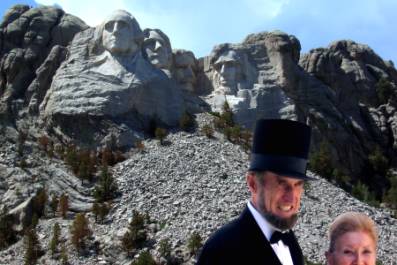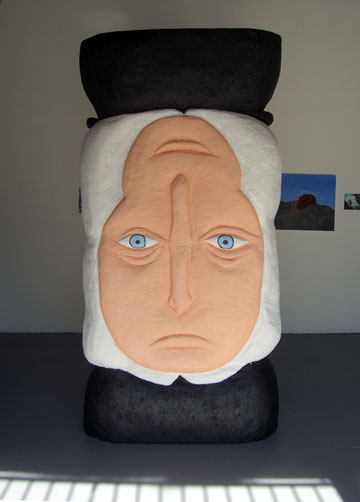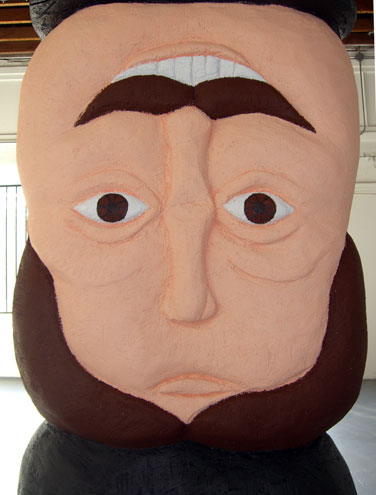| 4755 York Blvd Los Angeles CA 90042 |
| about |
| past |
| future |
| contact |
| press |
| submissions |
| giving |
closed until
Aug. 6th
then open
Sat. & Sun 1-6pm
or appointment
map
mailing list
subscribe
![]()
January 12 -Febuary 2, 2008
Opening on Saturday, January 19th 8-11 PM
PICTURES FROM THIS EVENT

postcard cover

Rushmore Ambigram (one side)

Rushmore Ambigram (other side)
In his second solo exhibition, MacFarland continues his ongoing project, The Lost Artworks , a multi-faceted, multi-media undertaking that exposes his interest in the truncated dialectic between lost and found, humor and tragedy, success and failure and how two seemingly opposing terms are dependent upon each other for their meanings.
In some of his previous work, MacFarland tried to initially make the viewer laugh by presenting an instance of failure that gives way to pathos. The intention is to always present a deeper, darker meaning that will not allow the work to be laughed at and then promptly dismissed.
For this exhibition, MacFarland juxtaposes two illustrious American institutions: Mount Rushmore and the legendary sibling comic team the Marx Brothers. Upon first reflection, it would seem that these two entities have very little in common. That was in fact the artists' initial impetus for bringing the two dissimilar things together, to force them to co-exist without reconciling their differences. Upon closer inspection, however, some similarities emerge. Carving in the Black Hills of South Dakota began in 1927. The Marx Brothers starred in their first feature in 1926. Construction on Rushmore ceased in 1941. The brothers went into semi-retirement in 1941. Four president's portraits reside on Rushmore. There were five Marx Brothers, but only four made a significant contribution to cinema: Groucho, Harpo, Chico and Zeppo. Of the four immortalized presidents, many feel that Roosevelt doesn't deserve his place among Washington, Jefferson and Lincoln and was only included because he was a personal friend of the sculptor, Gutzon Borglum. Similarly, Zeppo Marx was always perceived as the weakest of the Marx Brothers and his roles were limited to "the young romantic straight man". As legend goes, however, Zeppo actually played a better Groucho than Groucho himself while Roosevelt actually possessed the best sense of humor of the iconic presidents.
In this work the Marx Brothers represent the comical anti-thesis of the four figures on Rushmore. Whereas the South Dakotan monument has essentially stripped the four presidential subjects of their humanity and canonized them as infallible icons, the Marx Brothers epitomized that which is anti-heroic, and were most successful when mirroring and satirizing the many failings of mankind. As Trav S.D writes in the Vaudeville expose, No Applause, Just Throw Money, "Comedy is subversive. It is about defying expectations, turning things upside down, doing things wrong. It is anti-authoritarian."